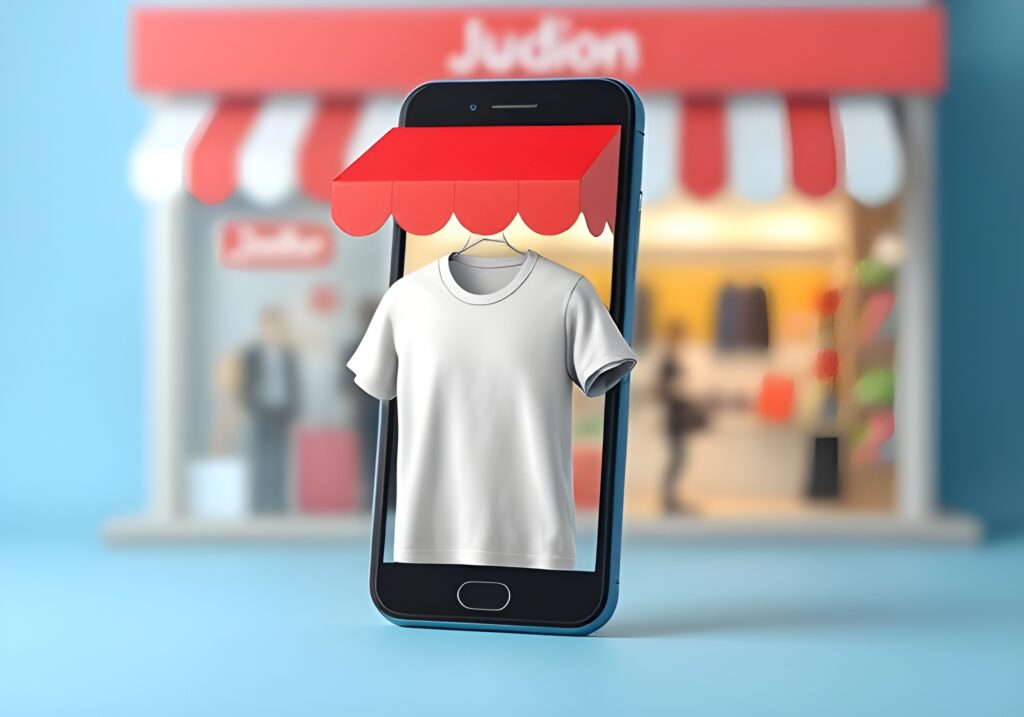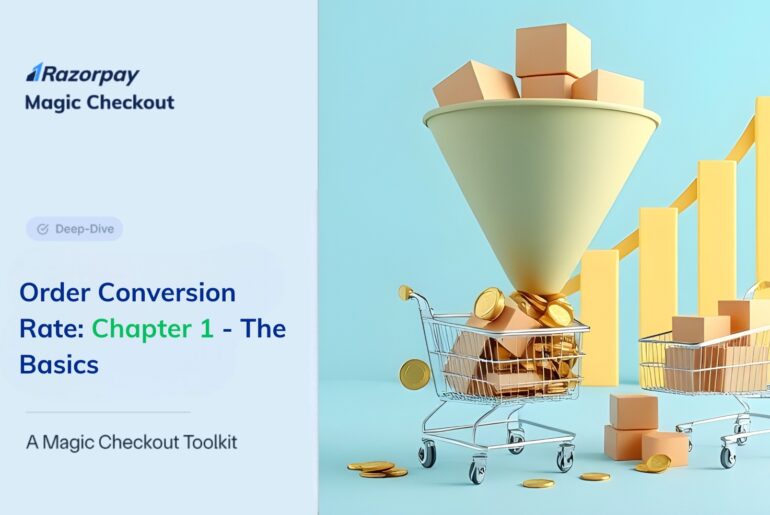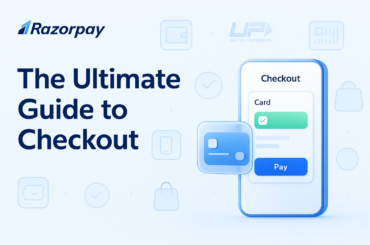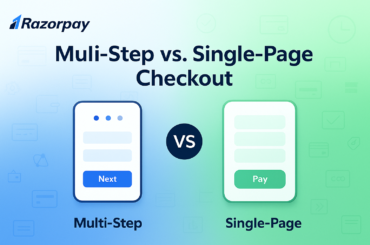Order conversion rate is a critical metric that influences every facet of your e-commerce business, from customer acquisition to long-term profitability. Every business, whether just starting or scaling, understands the importance of conversion rates in driving growth. However, optimizing order conversion rates requires a comprehensive approach, as there are many factors at play that need careful attention.
To help guide you through this process, we’ve created a series of blogs dedicated to providing insights into the various aspects of order conversion rate. Each post will delve into key strategies and factors, offering you practical steps to optimize this crucial metric and boost your e-commerce performance.
In this first installment, we’ll cover what order conversion rate is, why it matters, and the essential factors that influence this vital metric. With this foundation, you’ll be well-equipped to start optimizing your conversion process for better results.
Table of Contents
What is Order Conversion Rate?
Order conversion rate is the percentage of visitors to your site who complete a purchase. A high conversion rate signals that your site is effectively turning interest into action, while a low conversion rate often indicates that something in the customer journey is causing friction.
To improve order conversion rates, you must first identify the bottlenecks in the process—whether it’s a cumbersome checkout, slow load times, or inadequate payment options—and focus on removing these obstacles. By understanding these elements, you can implement changes that directly lead to improved outcomes.
How to Calculate Order Conversion Rate
The order conversion rate is a simple yet powerful metric that gives you a snapshot of your e-commerce performance. It is calculated using the formula:
Order Conversion Rate = (Total Purchases in a Specific Period of Time / Total Number of Website Visits in the Same Period of Time) × 100
Total purchases in a specific time frame: This denotes the overall number of completed transactions or orders made on your e-commerce site during a defined period, such as a day, week, month, or any other chosen interval.
Total number of website visitors during the same time frame: This reflects the total count of users who visited your e-commerce site within the corresponding period.
For example, if your site had 8,000 visitors in a month and processed 400 purchases, your order conversion rate would be:
(400 / 8,000) × 100 = 5%
This metric is vital for tracking trends, evaluating the effectiveness of your site, and refining strategies to boost conversions over time.
Key Factors Influencing Order Conversion Rate
 Checkout Process Efficiency
Checkout Process Efficiency
- One of the most critical factors influencing order conversion rates is the simplicity and speed of the checkout process. Customers expect a smooth, frictionless journey from cart to purchase. Long forms, multiple pages, and complex navigation are significant barriers that lead to cart abandonment.
- Streamlining the checkout process, such as reducing the number of form fields, minimizing the number of steps required to complete a transaction, and offering a one-click checkout solution, can significantly increase order conversions.
- Tools like Magic Checkout, for instance, help businesses reduce friction by automatically prefilling customer details. This makes the checkout experience 5x faster and more efficient, ultimately leading to a higher order conversion rate.
Trust and Security
- Customers need to feel confident that their personal and payment information is safe. A lack of visible security measures can create hesitation and lead to abandoned carts.
- Using SSL encryption, secure payment gateways, and clearly communicated return policies can provide trust signals that encourage customers to follow through with their purchases.
- Displaying security badges, offering easy-to-understand privacy policies, and providing secure payment options can also help reassure customers that their information is safe.
Mobile Optimization
- With mobile commerce growing exponentially, ensuring that your website and checkout process are fully optimized for mobile devices is essential. Mobile users expect the same seamless experience as desktop users, with no compromise on speed, usability, or functionality.
- A mobile-friendly checkout process can significantly increase conversion rates by reducing friction for users on smartphones and tablets. Ensuring quick load times and a simplified, responsive design can directly impact your conversion performance.
Payment Options
- Offering multiple, convenient payment methods is key to increasing conversions. Customers want to be able to pay in the way that suits them best, whether that’s through credit cards, digital wallets, or alternative methods like buy now, pay later services.
- Not offering a preferred payment method can be a major source of cart abandonment, so it’s important to cater to a variety of payment options. This flexibility improves the overall customer experience, which in turn boosts conversion rates.
Site Speed and Load Times
- Website speed is a crucial factor that directly influences order conversion rates. Slow-loading pages, especially during checkout, can lead to frustrated users who abandon their carts before completing a purchase.
- Optimizing your website’s load time is essential. Every second counts when it comes to user experience, and a delay in page load time can mean lost conversions. Tools like image optimization, server-side caching, and minimizing unnecessary scripts can significantly improve your site’s speed.
Read Also: Cart Abandonment: The Expert’s Game Plan
Personalization
- Personalizing the shopping experience—through product recommendations, dynamic pricing, or tailored discounts—can significantly boost conversions. When customers feel that a website is attuned to their preferences, they’re more likely to complete a purchase.
- Personalization also extends to the checkout process. Pre-filled customer details and customized payment options reduce friction, while a branded checkout page aligned with your business’s unique style can create a seamless, engaging experience. Whether it’s incorporating brand colors or festive themes, personalizing the checkout page reinforces your brand identity and enhances customer satisfaction.
Read Also: Make Your Checkout Truly Your Own
Clear Product Information and Visuals
- Customers want to make informed decisions, and unclear or insufficient product details can cause hesitation. High-quality images, detailed descriptions, and product reviews help customers feel confident in their purchase decisions.
- Transparency about shipping costs, return policies, and availability also plays a role in reducing friction and improving order conversion rates.
Exit Intent Popups and Cart Reminders
- Exit intent popups, which trigger when a user is about to leave the site, can be an effective strategy to recapture abandoning visitors. Offering discounts, free shipping, or other incentives through these popups can convince customers to complete their purchase.
- Cart reminder emails or notifications are also a good tactic to reduce cart abandonment, nudging customers to return to their carts and finish the transaction.
Read Also: Magic Checkout’s Abandoned Cart Recovery Solution
User Experience (UX) Design
- The overall design and user experience (UX) of your site plays a vital role in conversion rates. A website that’s easy to navigate, visually appealing, and intuitive encourages customers to stay longer and complete purchases.
- Clear call-to-action buttons, logical product categorization, and simple navigation make it easier for users to find what they need and move smoothly toward the checkout process.
Customer Support Availability
- Having robust customer support is often a deciding factor in whether customers complete a purchase. Immediate access to support, whether via live chat, email, or phone, can resolve last-minute hesitations or confusion, preventing cart abandonment.
- Offering customer support during the checkout process, such as FAQs, real-time assistance, or a support chatbot, can reassure customers and encourage them to finalize their purchases.
Post-Purchase Experience
The experience doesn’t end after the purchase; enhancing the post-purchase journey can help boost customer satisfaction and loyalty, contributing to more order conversions.
- Order Tracking and Updates: Providing customers with real-time tracking information and regular updates after purchase keeps them engaged and reassured, reducing anxiety and encouraging repeat business.
- Buyer Protection: Offering protection policies, like Razorpay Buyer Protection, ensures that customers feel confident in their purchase. With guarantees like returns, delivery, and prompt support, customers are more likely to complete their transactions and return for future purchases.
The Path to Improved Order Conversion Rates
Achieving a significant increase in your order conversion rate requires continuous evaluation and strategic adjustments. By focusing on improving the checkout process, enhancing security, optimizing for mobile, and providing various payment options, you can create a frictionless, user-friendly shopping experience that encourages customers to complete their purchases.
In the next blog of this series, we’ll dive into the best practices and strategies for improving your order conversion rate. We’ll explore actionable steps to enhance your conversion performance, including advanced techniques to optimize your checkout process, personalize the shopping experience, and boost customer confidence.
Stay tuned as we guide you through these essential steps toward maximizing your order conversion rate.



